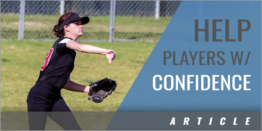| Bunt Coverage - Are You Sure Who Goes Where? |
| By: Cindy Bristow
Provided by: Softball Excellence Bunting will happen in one or both of the following situations: 1. It's championship play, against that championship pitcher, and your team can't hit to save their lives! 2. YOU'VE got that awesome pitcher that nobody can hit against, so bunting is their only option! In either scenario, championship play or playing behind a great pitcher, your team's ability to handle the bunt will determine your ability to win. It's that simple. If we look at bunt defense, at its core it's pretty simple; get in the proper position, field the ball, throw the ball and get into another important position. But we all know simple doesn't mean easy, and these four things can get pretty messed up. So let's take the issue of "who covers 3rd base on a bunt", and see what we can learn. I know that many coaches will have their Leftfielder cover 3rd base, but I want to give you 4 reasons why this isn't a good idea: • Speed of the runner/s • Power potential of the hitter • Depth of the outfield • Lack of base covering skills by an OF on a tag Now not all 4 will be in place on every bunt, but it's best to have an infielder cover 3rd if for no other reason than infielders are used to making tags around bases, while outfielders are not. The position that you'd like to cover the bunt is the person in the best position to make the throw – ideally to 2nd base to get the lead runner. If all infielders are Right-handed then that person is usually the 3rd baseman, if she can get to the bunt. But, if your 1st baseman is Left-handed then she'd be in position to make a throw to 2nd base if she can get to the bunt. • The key for your bunt coverage is this: • Get the bunt within a 2 count of the ball hitting the ground • Field the bunt with the best position to make an out (this determines who fields the bunt) Buy a ticket and popcorn, or else cover 3rd!
Your starting defensive position, prior to the bunt (called a "Set") also determines which infielder will likely be in best position to make the play on the bunt. For instance – there's lefty power hitter up that you aren't sure will bunt, so you'll need to play your 1B back in case she hits away, which means your P and 3B will have to cover all bunts. (picture to the right) The opposite is also true. If a Righty with power who might bunt is up, then your 3B will have to play back in case she hits, and then P and 1B will have to take all bunts. And here's the situation that's the trickiest…the runner on first is super-fast, and the offense bunts to the 3rd baseman on purpose. This means she's got to first field the bunt and make the throw, before she can hustle back to cover 3rd base - but in the meantime, the Runner at first never even slowed down at 2nd in her attempt to take 3rd on the bunt! Practice for all types of runner speeds, and defensive coverages…your season just might depend on it! |








